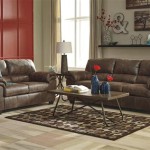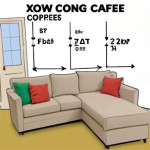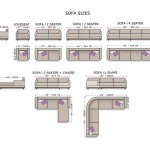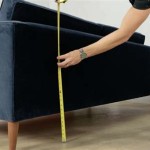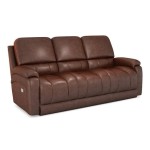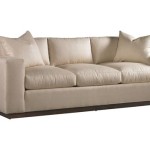Fabric Sectional Sofas With Chaise and Recliner: A Comprehensive Guide
Fabric sectional sofas with chaise and recliner features offer a versatile seating solution for modern living spaces. These sofas combine the flexibility of a sectional, the comfort of a chaise lounge, and the relaxation of a recliner, providing an adaptable piece of furniture suitable for various activities and preferences. The selection of fabric upholstery further enhances the comfort and aesthetic appeal of these sofas, allowing for customization to match existing décor and individual style.
The popularity of fabric sectional sofas with chaise and recliner options stems from their ability to maximize seating capacity in a given area while offering personalized comfort features. Unlike traditional sofas, sectionals can be configured to fit the specific dimensions and layout of a room, making them ideal for both small apartments and large family rooms. The addition of a chaise lounge provides a comfortable spot for relaxation and lounging, while integrated recliners offer individual seating with adjustable positions for reading, watching television, or napping. The fabric upholstery contributes to the overall comfort and adds a touch of warmth and texture to the living space.
When considering a fabric sectional sofa with chaise and recliner, several factors warrant careful evaluation. These include the type of fabric, the frame construction, the reclining mechanism, the dimensions and configuration of the sectional, and the overall style and design. A thorough understanding of these elements will assist in making an informed decision and selecting a sofa that meets specific needs and preferences.
Understanding Fabric Options
The fabric upholstery is a critical aspect of a sectional sofa with chaise and recliner, influencing both the comfort and durability of the furniture. Various fabric options are available, each possessing unique characteristics that impact its suitability for different lifestyles and environments. Common fabric choices include cotton, linen, polyester, microfiber, and blends of these materials.
Cotton is a natural fiber known for its softness and breathability. It is relatively inexpensive and available in a wide range of colors and patterns. However, cotton is susceptible to staining and fading, and it may not be as durable as other fabric options. Linen is another natural fiber prized for its strength and luxurious feel. Linen is more resistant to wear and tear than cotton, but it can wrinkle easily and may require professional cleaning. Both cotton and linen require treatments to be more resistant to spills.
Polyester is a synthetic fiber that is highly durable, stain-resistant, and fade-resistant. It is also relatively inexpensive and easy to clean, making it a practical choice for families with children or pets. Microfiber is a type of polyester fabric that is exceptionally soft and plush, offering a luxurious feel similar to suede. Microfiber is also resistant to stains and spills, making it a popular choice for upholstery. These synthetic options tend to retain heat more than natural fabrics, which could be a consideration in warmer climates.
Fabric blends, such as cotton-polyester or linen-polyester, combine the benefits of both natural and synthetic fibers. These blends offer a balance of comfort, durability, and affordability, making them a versatile option for sectional sofas. Selecting a fabric with a tight weave and a stain-resistant finish can further enhance the longevity and ease of maintenance of the sofa. The color and pattern of the fabric should also be carefully considered to ensure that it complements the existing décor and personal style.
Assessing Frame Construction and Reclining Mechanisms
The frame construction of a fabric sectional sofa with chaise and recliner significantly impacts its stability, durability, and overall lifespan. A well-constructed frame will provide a solid foundation for the sofa, ensuring that it can withstand regular use and maintain its shape over time. The materials used for the frame and the joinery methods employed are crucial factors to consider.
Hardwood, such as oak, maple, or birch, is typically preferred for sofa frames due to its strength and durability. Kiln-dried hardwood is even more desirable, as it has been treated to remove moisture, preventing warping or cracking over time. Softwood, such as pine, may be used in less expensive sofas, but it is not as durable as hardwood and may be more prone to damage.
The joinery method used to assemble the frame is also important. Corner-blocked frames, where wooden blocks are glued and screwed into the corners, provide excellent stability. Dovetail joints, which interlock the frame pieces, are another strong and durable option. Avoid frames that are simply stapled or glued together, as these are likely to be less sturdy and prone to failure.
The reclining mechanism is another critical component of a sectional sofa with chaise and recliner. The quality and functionality of the mechanism will determine the ease of use, comfort, and reliability of the reclining feature. Several types of reclining mechanisms are available, including manual, power, and wall-hugger recliners.
Manual recliners are operated by a lever or handle that the user manually pulls to recline the seat. These recliners are typically less expensive than power recliners, but they may require more effort to operate. Power recliners are equipped with an electric motor that allows the user to recline the seat with the touch of a button. Power recliners offer greater convenience and adjustability, but they require a power outlet and may be more expensive to repair.
Wall-hugger recliners are designed to minimize the amount of space required behind the sofa to recline. These recliners slide forward as they recline, allowing them to be placed closer to a wall. Regardless of the type of reclining mechanism, it is important to ensure that it operates smoothly and quietly and that it is constructed from durable materials.
Considering Dimensions, Configuration, and Style
The dimensions and configuration of a fabric sectional sofa with chaise and recliner should be carefully considered to ensure that it fits comfortably in the intended space and meets specific seating needs. Before purchasing a sectional, it is essential to measure the available space and create a floor plan to visualize how the sofa will fit in the room. Consider the placement of doorways, windows, and other furniture to ensure that the sectional does not obstruct traffic flow or block natural light.
Sectional sofas are available in various configurations, including L-shaped, U-shaped, and modular designs. L-shaped sectionals are ideal for corner placement and offer ample seating for multiple people. U-shaped sectionals provide even more seating capacity and are well-suited for larger rooms. Modular sectionals consist of individual pieces that can be arranged in various configurations, offering maximum flexibility and customization.
The placement of the chaise lounge and recliner sections should also be considered. The chaise lounge can be positioned on either the left or right side of the sectional, depending on the layout of the room and personal preference. Recliner sections can be integrated into various positions within the sectional, allowing for individual seating with adjustable positions. Some sectionals may have multiple recliner sections, while others may have only one or two.
The overall style and design of the sectional sofa should complement the existing décor and personal aesthetic. Sectionals are available in a wide range of styles, from traditional to contemporary, and in various colors and patterns. Traditional sectionals often feature rolled arms, button-tufted backs, and ornate detailing. Contemporary sectionals typically have clean lines, minimalist designs, and neutral colors.
The choice of fabric upholstery can also influence the overall style of the sectional. For example, a linen-covered sectional in a neutral color can create a sophisticated and elegant look, while a microfiber-covered sectional in a bright color can add a playful and modern touch. Consider the existing color palette, furniture styles, and accessories in the room when selecting a sectional sofa with chaise and recliner to ensure a cohesive and harmonious design.
Petaluma Fabric Power Reclining Sectional With Chaise Costco

Furniture Hutchenson 7 Pc Fabric Chaise Sectional With 2 Power Recliners And 2usb Consoles Macy S

Churanty Convertible Modular Sectional Sofa With Chaise And Recliner U Shaped Couch 7 Seat Fabric Sleeper For Living Room Dark Gray Com

Furniture Hutchenson 3 Pc Fabric Chaise Sectional With 2 Power Recliners And Headrests Macy S

Magic Home 110 In Pu Leather Recliner Sectional Sofa L Shaped Corner Couch With Storage Chaise Lumbar Support And Cup Holders Cs W1036s00021 The Depot

Homelegance 8238 6lrrc 6 Pc Shreveport Brown Fabric Sectional Sofa With Recliners Console Table And Chaise

Rockport 6pc Gray Power Reclining Sectional W Laf Chaise Lexington Warehouse

Furniture Nevio 3 Pc Fabric Sectional Sofa With Chaise Created For Macy S

Rockport 6pc Gray Power Reclining Sectional W Raf Chaise Lexington Warehouse
Trower 5 Piece Fabric Power Reclining Sectional With Headrests Costco

